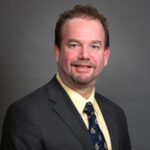In a recent class I was challenged by a participant whose organization wanted to be able to measure creativity. They felt that it was key to their artistic process that they hire and develop truly creative people, but they were having a hard time pinpointing exactly what they wanted.
The textbook answer is to “trust the process”, as the discipline of asking your team to formulate concrete intended results usually drives the design of meaningful measures. But the more I help organizations, the more I am starting to think that subject-matter expertise is also an important part of the formula.
The basic measurement development process embedded in our MPRA model is straightforward. We always start by articulating strategic intent using a disciplined process. Then there are four basic steps in measure development:

- Identify objectives and intended result(s)
- Understand alternative measures
- Select the right measurement(s) for each objective
- Define and document selected performance measures
From there we move to target setting and an ongoing performance review cycle.
It is during the intended results and alternative measures steps that the team spend most of the time thinking through an intangible like creativity. The challenge is almost always to establish consensus across the team about what the desired result is in concrete, measurable terms. From there, various alternative measures can be designed and the ideal measure(s) can be selected through a disciplined scoring process.
During these two steps, having a subject-matter expert in the room can be invaluable. For example, a subject-matter expert will have a deep understanding on how others have approached your problem. Creativity, for example, is an intangible quality that academics have been trying to measure for decades. How one defines “creativity” can vary and will impact the desired result we want to measure. Some scholars define creativity as the ability to produce original and appropriate solutions to problems or challenges. Others view creativity as a combination of novelty, usefulness, and surprise. In general, creativity involves generating ideas, products, or solutions that are both original and valuable.
A subject-matter expert will likely also understand how others have approached measuring creativity. This is useful not because we want to blindly adopt something that others have done, but to learn from the past and apply ideas that seem appropriate.
Most methods that have been used in academia could be broadly categorized as either subjective, objective, or a hybrid of both. Subjective methods of measuring creativity involve using the judgment of experts or observers to evaluate the creativity of a person or their work. These methods are commonly used in the arts, such as music, painting, and writing, where the evaluation of creativity is based on subjective opinions.
Objective methods of measuring creativity could involve the production of products or sales generated. On the academic side, objective methods include standardized tests or measures to assess creativity. An example includes divergent thinking tests, which assess a person’s ability to generate multiple and diverse ideas in response to a given prompt. The most common divergent thinking test is the Guilford Alternate Uses Test, which requires participants to list as many uses as they can for a common object. Another example is the Remote Associates Test, which assesses a person’s ability to identify the common link between three seemingly unrelated words. If you are trying to create an organizational measure, these academic approaches might not seem that helpful in a literal sense, but understanding the reasoning behind those measurements might drive the right solution. Perhaps an index could be created that included end outcomes focusing on products and revenue generated, medium impact measurements around subjective evaluation of design, and contributing factor-type measurements around the skills tests.
If you’d like to learn more about measuring creativity, Joe DeCarlo and I will be teaching a Master Class on this topic (and workshopping all the academic tests above plus more) at the 2023 Annual IASP Conference next month in Atlanta. Or for more about our general approach to measurement, check out the KPI Professional Certification program.
David Wilsey is the Chief Executive Officer with the Balanced Scorecard Institute and co-author of The Institute Way: Simplify Strategic Planning and Management with the Balanced Scorecard.

